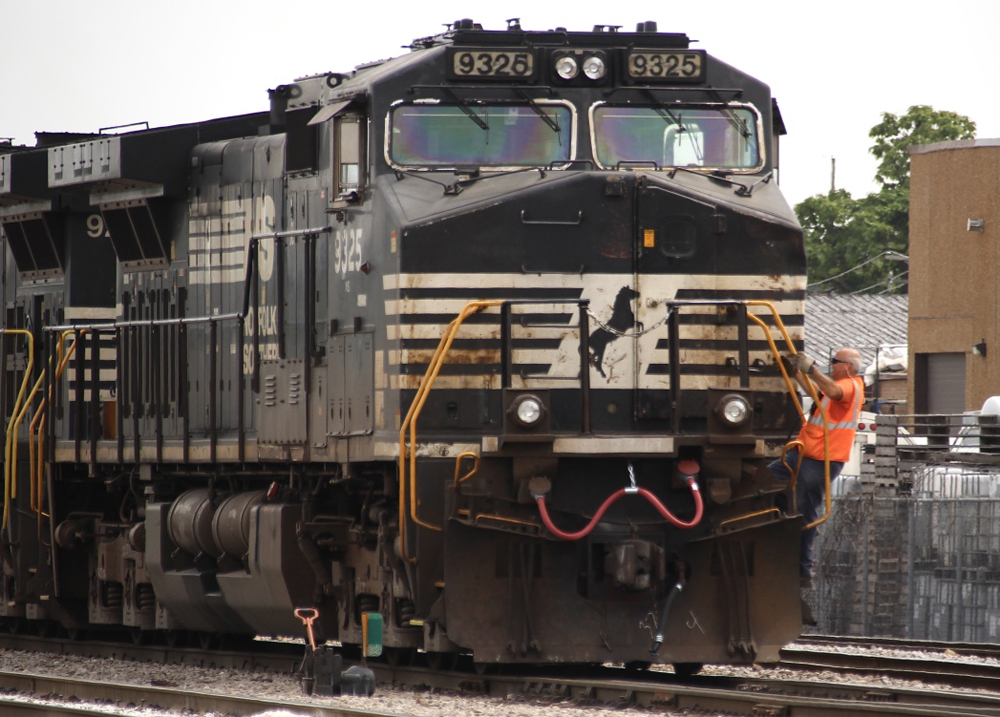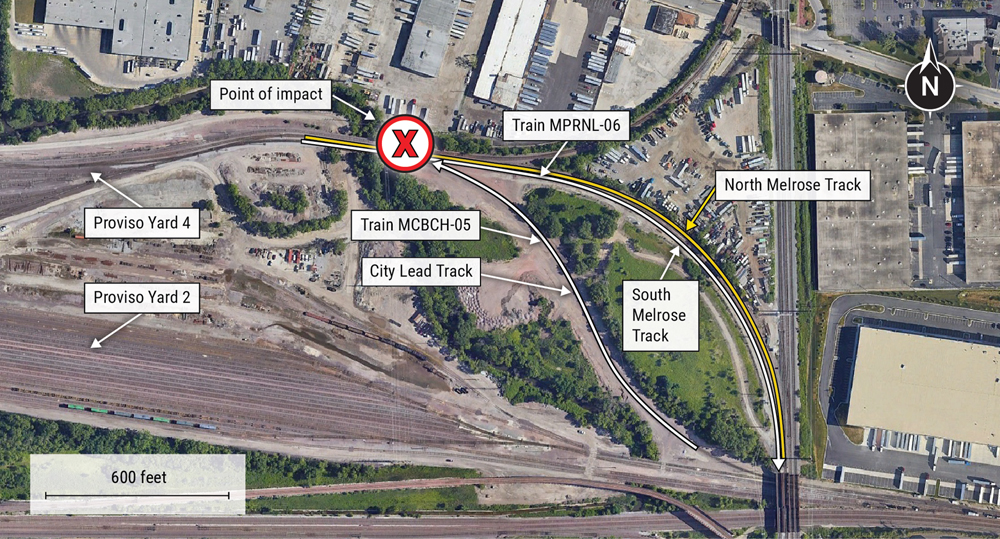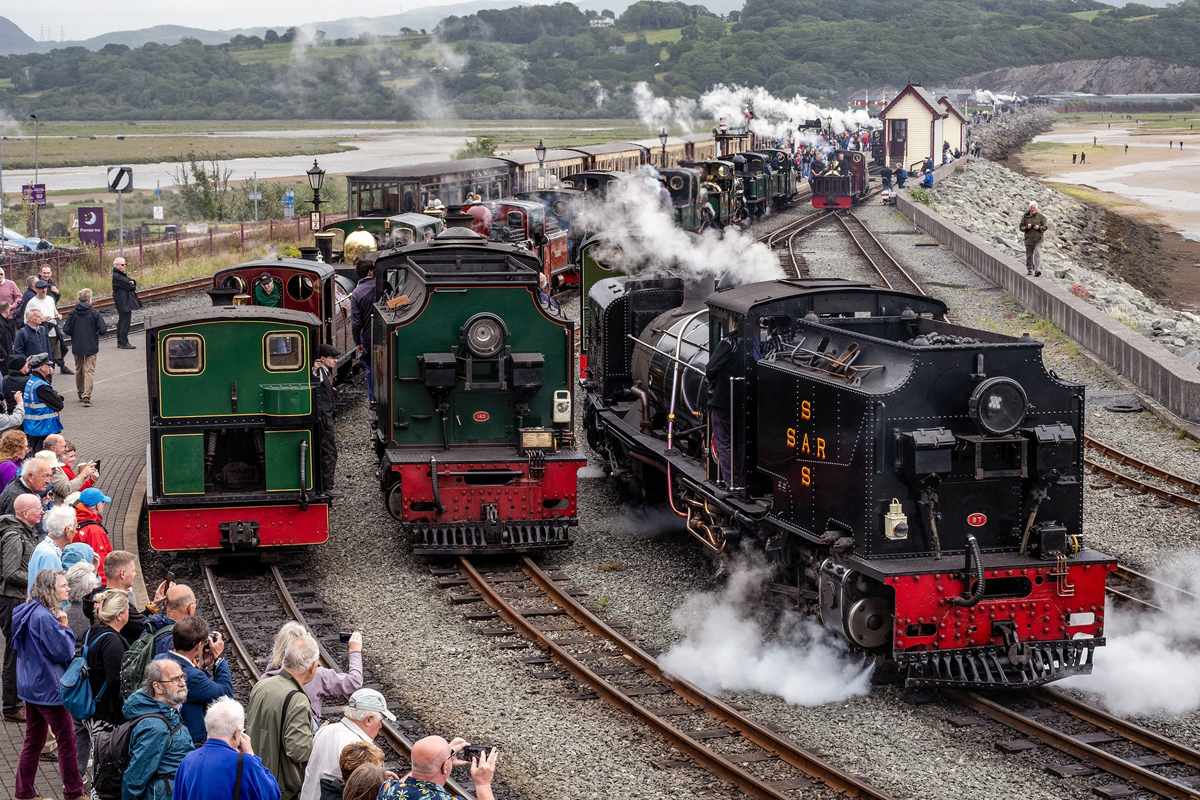
NORFOLK, Va. – Norfolk Southern’s chief financial officer says the term “one-person crew” is a misnomer that has only stoked controversy about the rail industry’s proposal to use ground-based conductors on routes protected by positive train control.
“It’s unfortunate the terminology on one-man crew or one-person crew … because I don’t think it’s really the right terminology and it’s become a bit of a lightning rod,” Mark George told an investor conference today.
“The reality is this is about crew redeployment. Technology has rendered the role of a conductor in the cab itself unnecessary. So what we would like to see is ground-based conductor positions,” George says. “We think that that’s better for all stakeholders, including the crew people themselves to be on the ground as opposed to stuck in the cab. So that is definitely an area that we’d like to continue to push.”
The Class I systems envision using roving conductors who are responsible for several trains in their territories.
The Class I railroads are currently in national negotiations with rail labor unions. In November 2019 the National Railway Labor Conference told labor unions that it was critical for the industry to take advantage of technology and adapt to changing times and competitive pressures.
“Perhaps the most glaring example of our need for modernization concerns the size and makeup of train crews. In order to take full advantage of new investments in modern technology, reduce human error and better align operational costs with other industries, railroads propose to redeploy conductors from the cab of the locomotive to ground-based positions on territories where PTC or equivalent technologies are enabled,” the labor conference said. “Redeploying employees to ground-based positions in these territories will safely and more efficiently meet the industry’s operational and service requirements while providing those employees with higher quality-of-life jobs that allow more employees to spend their nights at home after shifts rather than at hotels.”
Negotiations, which also include broader contract issues, are not expected to conclude for another couple of years, George says.
Railroads argue that positive train control, which is designed to prevent train collisions and overspeed derailments, reduces the need for a second pair of eyes in the locomotive cab.
Rail labor opposes reductions in crew size and contends having just one person in the cab would pose safety and service issues. Unions have backed state laws that would require two people in the cab of locomotives. Railroads have challenged laws that have been enacted in several states.
SMART Transportation Division President Jeremy R. Ferguson says keeping two people in the locomotive cab adds a critical layer of safety.
“Having two people aboard a train is about public safety, employee safety, and safe operations. There is a rule of two in safety-sensitive industries — pilot and co-pilot in the air, driver and medic for EMS, first responder and a backup for police and fire,” he says. “With the risks involved in transporting many of the materials our trains carry, freight rail should be counted among those. Anything less is a risky attempt to appease corporate greed and to place productivity and profit ahead of safety.”
Ferguson also says that the industry’s shift to Precision Scheduled Railroading has reduced employment levels, significantly boosted train lengths, and placed increased demands on train crews.
“Taking the conductor out of the cab does nothing to decrease task overload, mitigate the historical problem of mental fatigue that rail crews experience or help to prevent the loss of situational awareness that rail crew members, including engineers, are experiencing due to a combination of slashing jobs and Precision Scheduled Railroading,” Ferguson says. “Using the euphemism of ‘redeployment’ merely masks the fact that an initial responder will be taken out of the train when a rail incident occurs. As supported by studies done by the Volpe Center, the eyes, ears and knowledge and skill set provided by a conductor in the cab along with an engineer is a major reason why rail crews work efficiently now when things go well and are able to quickly respond above and beyond the call when things do not — simply look at what happened this past weekend in Iowa and Minnesota for evidence of that.”
Ferguson was referring to two Union Pacific derailments over the weekend.
He also is critical of technology that railroads say will help in the shift to one-person crews.
“Carriers’ visions of one-person crews provide no solution to the shortcomings of technologies such as Positive Train Control and Trip Optimizer/Leader or to the business practices the Class I’s have largely chosen to pursue,” Ferguson says.
Earlier this month Union Pacific CEO Lance Fritz said the answer to driverless trucks, which are currently making pilot runs in the Southwest, is autonomous trains. A first step, Fritz says, is reducing crew size [see: “Union Pacific says autonomous trains are the answer …,” Trains News Wire, May 5, 2021].
— Updated at 8:35 p.m. CDT with comments from SMART Transportation Division President Jeremy R. Ferguson














“Chief financial officer says railroads seek ‘crew redeployment’ to take advantage of technology”
Sounds like someone who was involved with the Army? The Army doesn’t retreat; it does “Retrograde Operations!”
I agree with others about the real meaning of “One Man Crew.” Mr. CFO might say that it is a misnomer to say that a man in the artic is alone, even though there is no one closer than 10,000 square miles because he has a satellite phone to transmit a message, which is retransmitted over the web to all the world population of 7.8 billion people.
There were so many mistakes committed by so many involved in the Lac Megantic catastrophe that I used the TSB report in my aeronautical decision making / safety classes.
1. Would PTC prevent an engineer from not setting enough brakes? (A second crewmember may have told the engineer more needed to be set.)
2. Would PTC prevent the engineer from not using the good engine with auto start to maintain air pressure? (Another crewmember may have suggested that.)
There were so many wrong things that happened that day that PTC would not have corrected. PTC does add an extra layer of safety for some railroad moving operations, but not all of them by any means and I know of none after the train stops moving.
Are they going to have a body cam on the engineer so someone remotely can watch his actions when securing the train? I don’t think so when there are so many upset with inward facing cameras that only monitor operations in the cab.
I could go on and on. It does not have anything to do with safety; it’s just trying to use fancy words to lull people into thinking it’s a good idea. To get more bonuses for the CFO for trimming personnel from the payroll, to get more money for the stockholders that do not have any skin in the safety of others.
There will come a time when automation will be relatively safe but we are not there yet. Owners mostly only do what’s right AFTER something WRONG has happened…and only because they are made to.
(Paraphrasing) After the dispatcher got through telling the engineer what to do, not to worry about the locomotive spewing sparks (another crew would take care of it), etc. He was very quick to pass the blame back to the engineer when the tank cars exploded in town. The ole, you have to follow what I tell you followed by, “You’re the engineer; it’s not my fault!”
Sorry, it is a hot topic for me.
Really not one man.? One man on a train is a one man crew. Here we have language degradation by some official who wants to spin the words and sentence.
How is the need for a second crew member affected by the length of a train?
If the train breaks a knuckle on the road, the conductor has to walk the entire length of the train, find the split, get a replacement from the engine, fix the break, and get back in the cab…….in other words…. increased train length only increases the need for a conductor. Personally I think three men is the ideal train crew size….it’s not the old bloated 5 man crew but it’s not contributing to working conditions that made the PTC mandate a reality. You’d be surprised the kind of situations that occur where having an extra person could really help in tackling faster/better….there’s never a boring day on the railroad.
Aren’t trains practically operating at a crew per truckload rate that makes them equivalent to almost crewless? Just divide the # of crew members by each truckload a 14,000 – 17,000 ft train is carrying.
I believe they’ll learn that a ground-based conductor is impractical; there’d be nobody on-site at the location of an emergency braking, for instance due to a coupler separation or other non-derail emergency. I could also see issues where manually throwing switches, opening gates, etc. is involved as the conductor would have to drive between switching locations, actually increasing costs and health risks as compared to staying with the train.
I understand the idea of cutting costs but honestly this looks more likely to increase costs and decrease efficiency.
Maybe we should have a few less company executives and leave the train crews as they are.
A single person crew will only work if ever/when there is a total rethinking on how the railroad and complete rail system works. It will require a massive investment in road separations double tracks and ending the requirement of “common carrier” take any hazardous material virtually anywhere. I don’t think that’s going to happen soon.
First: “one-person crews is a misnomer”… No, it’s exactly right. A crew is the people assigned to the train. Not the people on the train and on the ground. A “roving conductor” is not assigned to the train, he/she is assigned to the territory. One person crew is exactly what it is.
Second, PTC does not, and was never intended to, operate the train at restricted speed. The law specifically exempts restricted speed from being enforced. NOTHING prevents a train from rear-ending another train.
Yet this is the time the engineer needs the conductor most. It’s often midway through the trip, our bodies are relaxed into a state of blissful calm and lowered response characteristics by the rocking of the train and the vibrations of the diesel. Rock a baby to just before sleep and see how well it walks.
Then instantly expect us, singly, to go into heightened response mode, as we are ordered to “sneak” up behind another train, putting the engines between the 18,000ton coal train behind me, and the 14,000ton crude oil train in front of me.
It’s a maneuver that even well rested employees can mess up, simply because it’s complicated.
Single person crews are about improving the bottom line, nothing else. The railroads have NEVER cared about crew well being before, anything for those of us doing the work have been shoved down the carrier’s throats by union forcing strikes or government forced regulations or laws.
Make no mistake, the risk belongs solely to the people who operate the trains and the people who live in the communities the trains operate through. In all the thousands of fatal accidents in the 200 years we’ve been putting steel wheel to steel rail, never has a company executive been hurt, and they won’t start now.
Very well stated, Jason.
Once again it just goes back to corporate greed if you really want to do this then make the trains go back to 3,000 feet or less and also teach the conductors to fly helicopters so they can get out there and fix all of the myriad of problems faster.
I work on a class one railroad as an engineer and deal with all this new technology on a daily base. Yes it works, but there are a lot of times it doesn’t. I have noticed from running a train, Im spending more time looking at the computers, making sure that everything is going to work right, then looking out the window, for obstructions, or people walking on the track. If you don’t catch the mistake the computer makes, the company will fire you. The engineer has more of a responsibility than he ever has, running longer trains, making sure the dp engines do what you want it to do. This is why you need a conductor.
Rio Tinto operates the longest automated trains in the world, I don’t really care that it’s in the middle of nowhere Australia, the technology works and that’s really all that matters in the end. As for those that say comparing the shorter, faster one-person crews the rest of the world uses doesn’t compare to 12,000 – 15,000 ft U.S. freights, look at it this way, what’s the difference between 5 3,000 ft trains and 1 15,000 ft train?
But ultimately that’s the difference. Rio Tinto’s trains in remote NW Australia are completely isolated from everything else, and in incredibly remote regions. They’re simply moving ore to the docks (apparently the last miles are run by humans) from the middle of the outback. The only creatures they’re going to encounter are kangaroos and other animals.
That’s a pretty straightforward scenario.
Well I don’t work for the railroad but I certainly see this as a safety issue as a lay public.
A chief financial officer talking about Train and Engine railroad operations. It’s like they are begging for oppressive regulation.
And that’s just what they will get… they are but one Lac Megantic away from the government coming down hard with regulations.
The rest of the world uses single person crews in locomotives extensively and has done so for decades. This has included operations in Australia that have very similar operating conditions. The additional level of safety and protection provided by PTC enhances safety levels way beyond that provided by 2 person in cab operations.
The rest of the world does not routinely see heavy 12,000 foot freight trains on almost exclusively single track main lines over long distances.
Quebec Cartier uses one-person crews backed up by standby personnel that can be deployed in helicopters. I wouldn’t want to state equivalence between the Quebec outback and urban America. BTW speaking of Quebec, a one-person crew wiped Lac Megantic off the map.
“We think that’s better for all stakeholders”. Yep, that says it all.
STEVEN in business terminology, ‘stakeholder’ refers to everyone connected to the element being discussed. Whether or not you agree with the comments by Mr. George, he’s including the affected employees in his reference, not just the ‘shareholder’ investors.
Oh I think we know what he means by stakeholders, and believe me it’s not the affected crew or the public.
As soon as airlines go to one man crews the railroads can too. I’ll be dead by then. As for driverless trucks? Yeah right…ever see I 80 or I94 between Detroit and Chicago in the winter? Ain’t gonna happen.